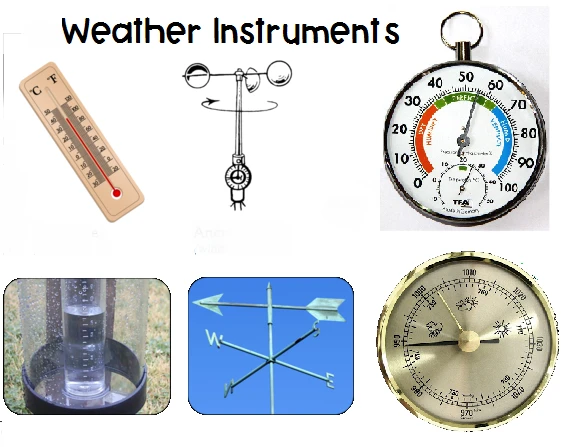
# Weather Gauges and Instruments for Accurate Meteorological Measurements
## Introduction to Weather Gauges
Weather gauges and instruments play a crucial role in meteorological measurements, providing essential data for weather forecasting, climate studies, and environmental monitoring. These tools help scientists and meteorologists collect precise information about atmospheric conditions, enabling better predictions and analysis.
## Essential Weather Instruments
### Thermometers
Thermometers are fundamental instruments used to measure air temperature. Modern digital thermometers provide accurate readings, while traditional mercury thermometers are still used in some applications.
### Barometers
Barometers measure atmospheric pressure, which is vital for weather prediction. Mercury barometers and aneroid barometers are the two main types used in meteorological stations.
### Hygrometers
Hygrometers determine the humidity level in the air. Psychrometers, which use wet-bulb and dry-bulb thermometers, are commonly used for this purpose.
### Anemometers
Anemometers measure wind speed and direction. Cup anemometers and vane anemometers are widely used in weather stations and aviation applications.
### Rain Gauges
Rain gauges collect and measure precipitation. Standard rain gauges have a funnel that directs water into a measuring cylinder, while tipping bucket rain gauges record rainfall electronically.
## Advanced Meteorological Instruments
### Weather Radars
Weather radars detect precipitation, its motion, and intensity. Doppler radar systems can also provide information about wind patterns and severe weather conditions.
### Weather Satellites
Geostationary and polar-orbiting satellites provide comprehensive data on cloud cover, storm systems, and other large-scale weather phenomena.
### Ceilometers
Ceilometers measure cloud height and vertical visibility, which is particularly important for aviation weather services.
## Importance of Accurate Measurements
Precise meteorological measurements are essential for:
- Accurate weather forecasting
- Climate change research
- Agricultural planning
- Disaster preparedness
- Aviation safety
## Maintaining Weather Instruments
To ensure accurate readings, weather instruments require regular:
- Calibration
- Cleaning
- Protection from extreme conditions
- Proper installation
## Conclusion
Weather gauges and instruments form the backbone of meteorological science. From simple thermometers to sophisticated satellite systems, these tools provide the data necessary to understand and predict weather patterns. As technology advances, these instruments continue to improve in accuracy and reliability, helping us better comprehend our ever-changing atmosphere.
Keyword: weather gauges instruments